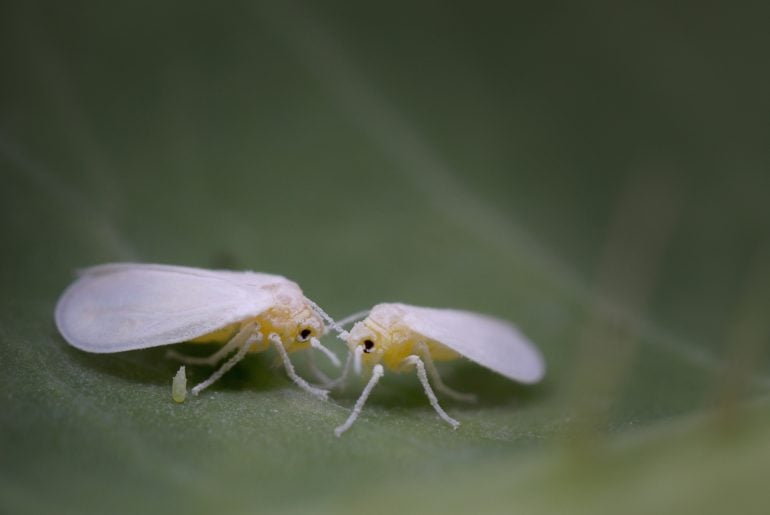One of the biggest issues that you may be faced with when it comes to growing cannabis are pests. If you are growing your cannabis plants outdoors, the risk of pests infesting your crop is quite big.
If you are growing cannabis plants indoors, although your four walls and roof offer some protection, there is still a chance that a select few pests get into your plants and soil. The issue with pests more often than not is that they reproduce extremely quickly, particularly if we are talking about insects.
They often reproduce so quickly that once a colony has been established, getting rid of them is very difficult. Therefore, it is extremely important that you identify pests as soon as they start to appear, and moreover that you identify them properly, so you can then take the appropriate steps to get rid of them.
The faster you can get rid of any pests that infest your cannabis crop, the better the end result will be. If you leave pests untreated for prolonged periods of time, in many cases, they may kill your weed plants. Therefore, today, we want to take a look at 18 common cannabis pests, how to prevent them, and how to get rid of them.
1. Aphids
Aphids are a big cannabis pest and one of the common problems as far as cannabis plants are concerned. These little insects use their mouths to penetrate plants, both leaves and roots, to suck out fluids. Although just a few aphids may not pose much of a threat, a whole infestation can effectively eat your cannabis plants.
This cannabis pest can also cause severe damage to the roots, therefore stopping your cannabis plants from growing. Aphids can be up to 4 millimeters in length, they have soft bodies, and are pear shaped. They can be many colors, including green, red, black, brown, grey, and yellow, and they may or may not have wings.
One of the easiest ways to get rid of an aphid infestation is by spraying your leaves with a solution of water and dish soap. To prevent aphids, a good tactic is to plant onions and garlic nearby, because they hate these plants.
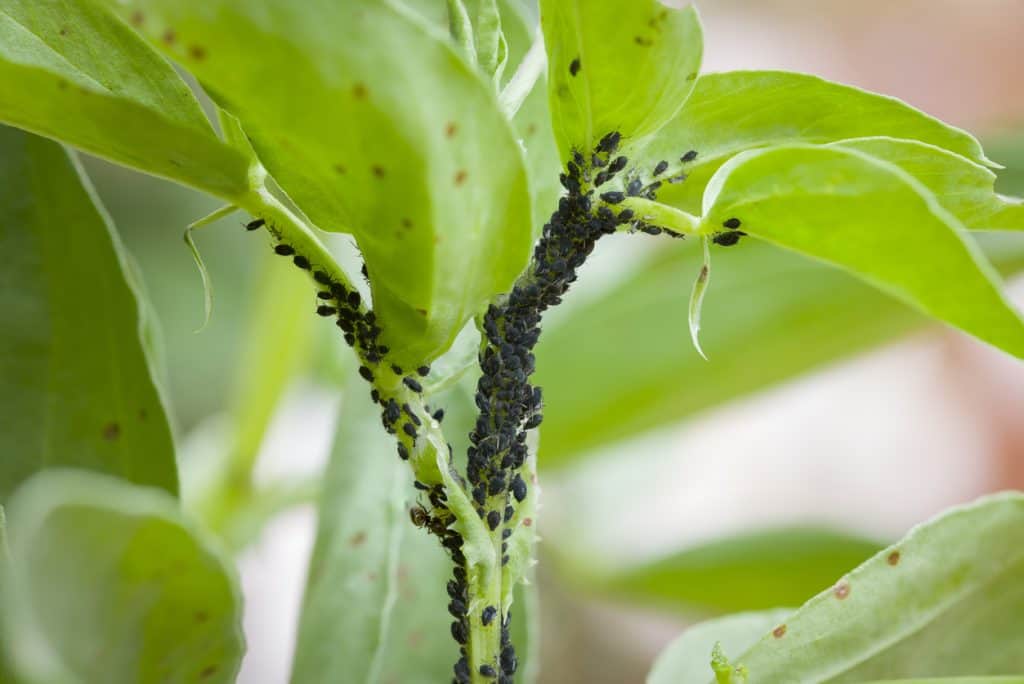
2. Barnacles
Although it is thought that barnacles are related to snails, they’re actually more closely related to crabs, and they are quite the cannabis pest. That said, they do look like little snails with cute shells. However, they certainly are not cute, because barnacle infestations can literally kill your plants.
Barnacles like finding parts of the leaves and stem that are nice and juicy and will then proceed to take hold and suck the life out of your cannabis plants.
One of the easiest ways to get rid of barnacles on cannabis plants is to pressure wash them away or to just take them off. Luckily, barnacles don’t reproduce as quickly, and are usually only a problem when growing outdoors. If needed, insecticidal soaps will work as well.
3. Broad Mites
Broad mites are a very small type of mite that have four pairs of legs, are oval shaped, and are usually translucent in color, with a hint of amber, green, or yellow. They also have a tapered body which is the widest between their second pair of legs.
These mites lay eggs on the underside of leaves, and also feed on the leaves and stems. Not only did this cause damage in itself, but they also leave behind toxic saliva that causes malformations in the plant. One of the only ways to get rid of this type of mite is by using an insecticidal soap or fatty acid salts.
4. Caterpillars
Caterpillars are of course the initial form of butterflies and moths. Caterpillars come in all kinds of shapes, sizes, and colors, and they’re pretty easy to recognize. We’re sure you’ve seen a caterpillar once or twice in your life.
Unlike other insects, such as flies and mites that multiply very quickly, the biggest issue with caterpillars is that they are voracious eaters. They will quite literally eat the flowers, leaves, stems, and everything else on your cannabis plants, leaving behind massive swaths of destruction.
One of the easiest ways to get rid of caterpillars is to simply pick them off or to use insecticidal soaps. However, these are usually only problems outdoors, as caterpillars very rarely get into indoor grow rooms.
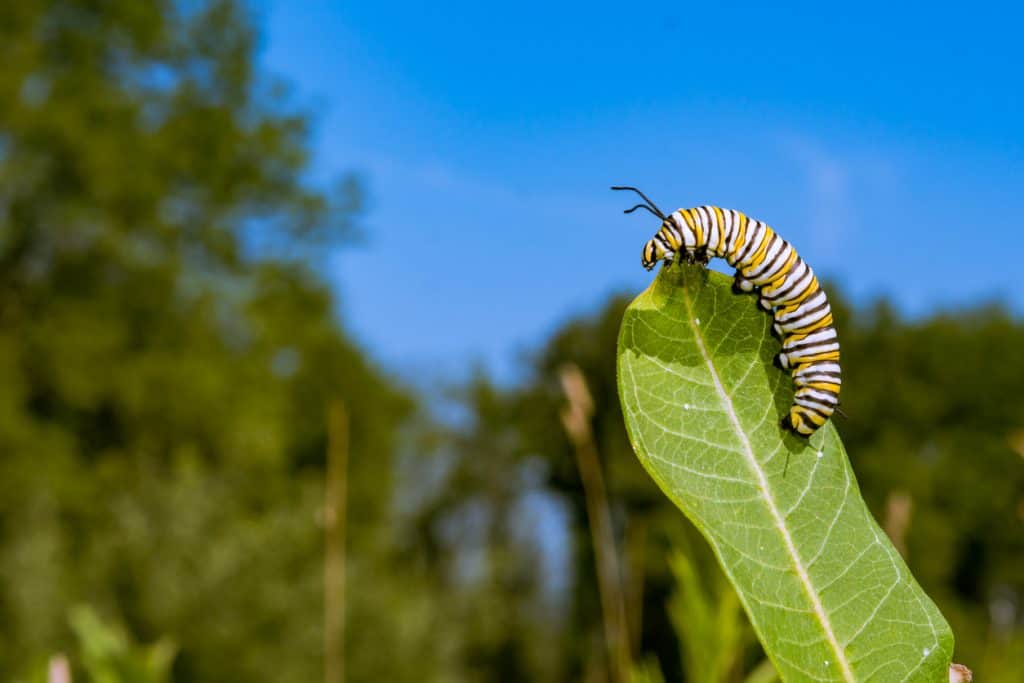
5. Crickets
If you are growing cannabis outdoors, another major pest you might have to deal with is the common cricket. Just like caterpillars, one of the main problems with common crickets is that they are very hungry, and they will devour plants of all sorts, including cannabis plants. If you have too many crickets around, they can quite literally eat your whole crop.
Although picking crickets off of your cannabis plants is an option, this usually proves to be futile, especially if there are a lot of crickets around.
More often than not, using an insecticidal soap of sorts is required to prevent and control crickets from infesting in cannabis crop when growing outdoors. Other options that can keep crickets at Bay include diatomaceous earth, pyrethrin, spinosad, and boric acid.
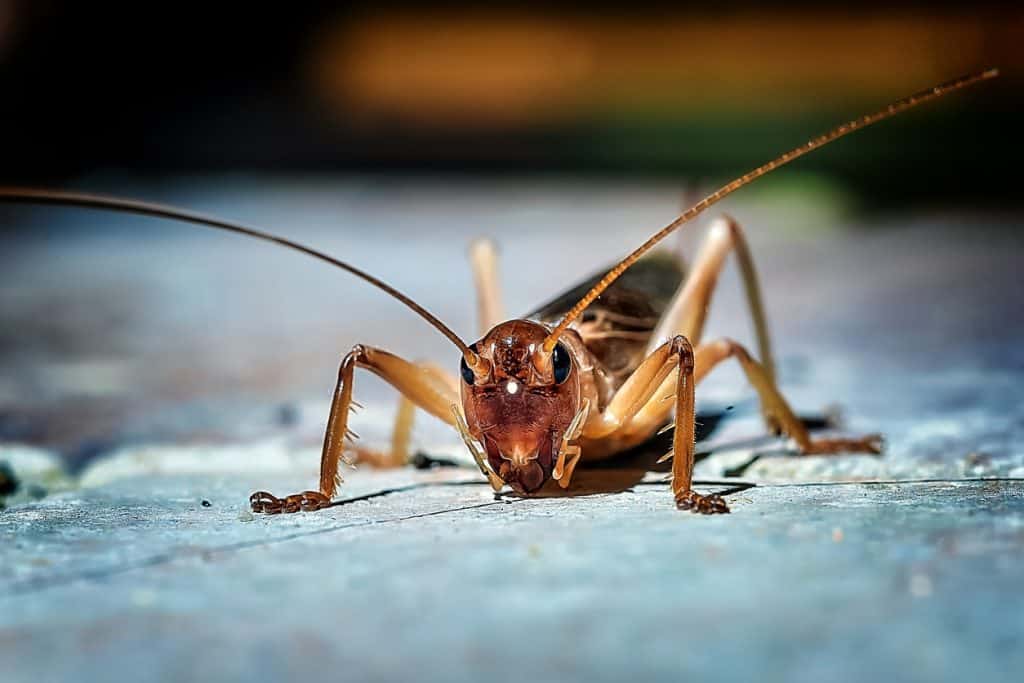
6. Four-lined Plant Bug
The four-lined plant bug, as the name implies, features four black lines along its back, which is usually yellow or greenish. They usually have orange heads with large black eyes, antennas, and six green legs. Thankfully, they are very easy to identify.
While the four-lined plant bug doesn’t actually cause holes or major damage in cannabis plants per se, they suck the sap out of the leaves, therefore drying them out. If you see bronze or brown spots that form over time, then it is quite likely a result of these little bugs. Manually removing the bugs is one option, with insecticidal soap being another.
Many people also choose to simply spray their plants with water or to vacuum the bugs and eggs right off of the plants. They’re substantially bigger than mites and aphids, and also don’t reproduce quite as quickly, so as long as you catch the infestation before it explodes, it should be controllable.
7. Fungus Gnats
One of the worst infestations you could have on your cannabis plants are fungus gnats otherwise known as fungi pests. Fungus gnats look like very small mosquitoes, or like extremely small flies. They are very small, black, and have slender legs with segmented antennae. These are some of the most harmful creatures that can infest your cannabis because they love to eat roots.
They multiply extremely quickly, they like to nest in the top layer of damp soil, especially if there is fungus present, and they will quickly destroy the whole root system of a cannabis plant. Homemade traps made out of apple cider vinegar, water, and dish soap work just fine, although natural insecticides such as pyrethrin might be required for extreme infestations.
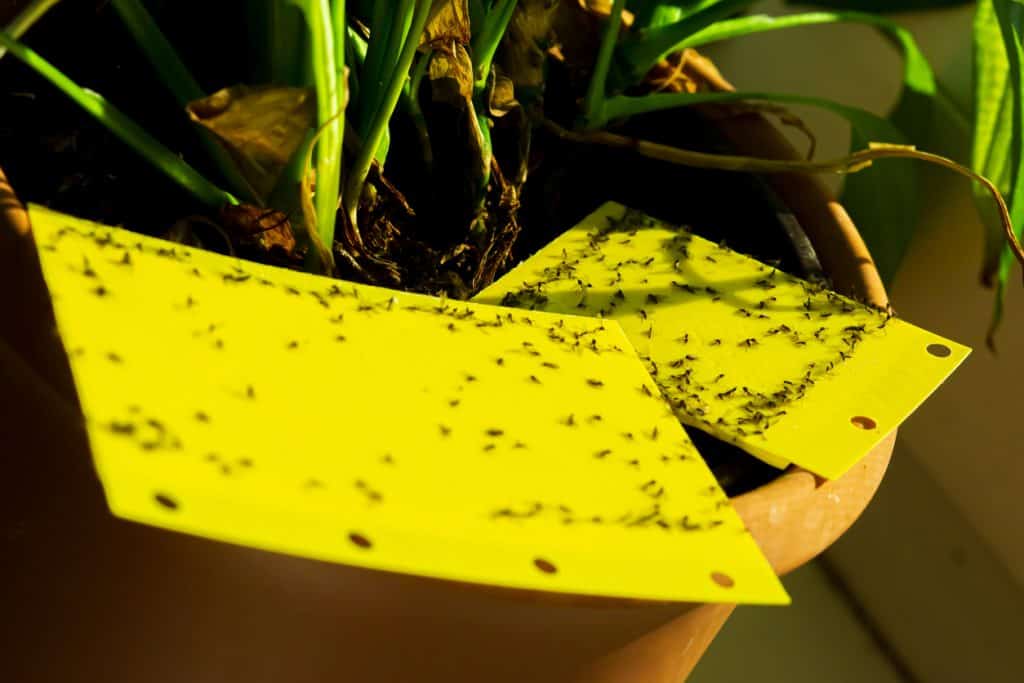
8. Grasshoppers
Albeit not a super common occurrence, there are times where outdoor cannabis crops may be affected by grasshoppers. Grasshoppers are very easy to identify by their long green bodies along with their bent legs.
When you see these little guys jumping around, you should know exactly what they are. Grasshoppers, just like crickets and locusts, have massive appetites, and will quickly consume whole crops.
Therefore, if you notice a grasshopper infestation, you’ll have to act fairly quickly. You can always try picking them off manually, as they are quite large and easy to catch. However, to get rid of the majority of them, you can try pressure washing them off of your cannabis plants, or even using a plant safe insecticide.
9. Inchworms
Technically speaking, inchworms are known as types of caterpillars, although these specific caterpillars are moth larvae as opposed to butterfly larvae.
Although these little caterpillar-like creatures may look cute, they tend to cause massive amounts of damage to crops of all sorts, including cannabis. They are extremely hungry animals, as they need to gather energy for their big metamorphosis into moths.
However, unlike other such as aphids and various types of flies, inchworms don’t really multiply with each other, and therefore it can’t quickly overtake a crop. However, just a few of these informs can cause a lot of damage.
One of the best ways to remove them is to manually pick them off of your plants. Many people also choose to use plant safe insecticides area. For outdoor gardens, one of the easiest solutions is to make sure that predators such as birds have access to your plants, which act as a natural inchworm control method.
10. Leafhoppers
Yet another common pest that your cannabis crop may be affected by, particularly if growing outdoors are leaf hoppers. As you can probably guess, leaf hoppers are closely related to crickets and grasshoppers. However, unlike crickets and grasshoppers, leaf hoppers are much smaller, usually a maximum of 1/4 inch in length, usually about as big as a grain of rice.
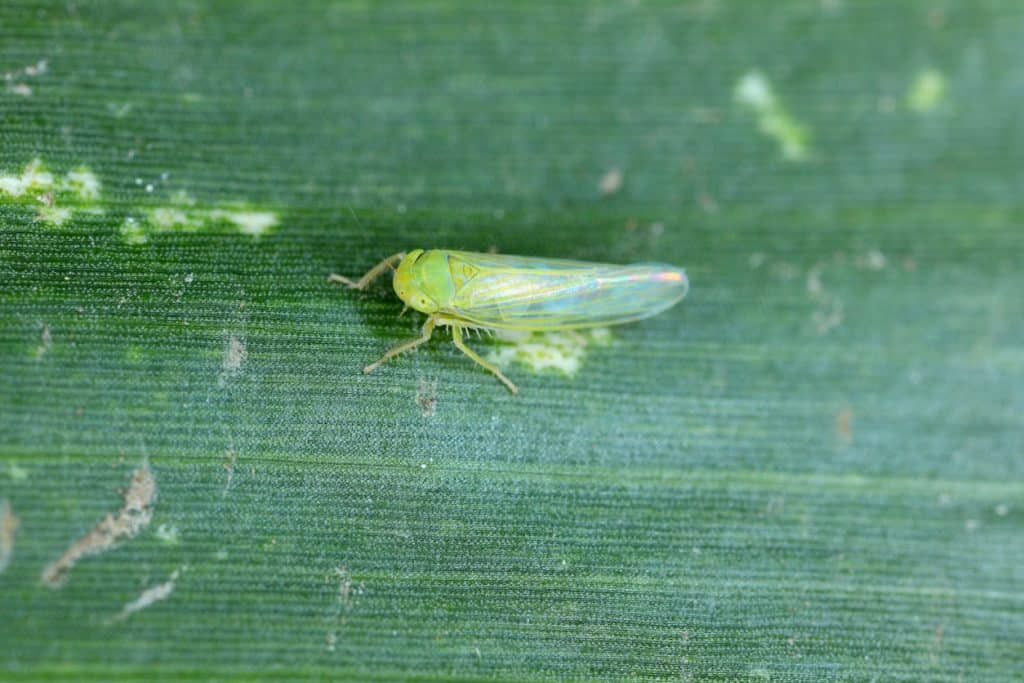
Other than that, their appearance is quite similar to that of a grasshopper. Just like with grasshoppers, the big issue with leafhoppers is that they are voracious eaters, they suck the sap right out of your plants, and they may even transfer various viral diseases to your cannabis crops.
It is therefore essential that you remove these as soon as possible, with manual removal always being an option. Another issue with these critters is that their eggs and nymphs are very resilient, with one of the only good solutions being a neem oil spray or an organic insecticidal soap.
11. Leaf Miners
You may hear people referring to leaf miners, which can be kind of confusing, because this doesn’t actually refer to a single species of insect or pest, but rather to a whole category.
Here we are talking about insect larvae that like to tunnel inside of plants and eat the leaves as they go. This can include, but is not limited to, beetle, fly, and moth larvae. All of these types of larvae are very hungry creatures and they love to eat. All of these creatures look like very small worms or grubs.
If you are growing cannabis outdoors, some natural predators such as birds might be enough to keep them under control. However, if this is not an option for you, you can manually squash and kill larvae, you can remove the leaves where you see tunnels being formed, and you can even cover susceptible cannabis plants with mesh, like cheese cloth, to prevent the bugs from taking hold.
Moreover, removing debris, weeds, and various food sources for these larvae can also be beneficial. There are then also a variety of organic pesticides and insecticidal soaps that will kill all of these creatures, with neem oil being one of the best.
12. Mealybugs
Mealybugs kind of look like potato bugs, but instead of being grey or brown are white in color, and can be identified by their oval shaped bodies that are segmented with horizontal lines. They also have long, white, and spindly legs.
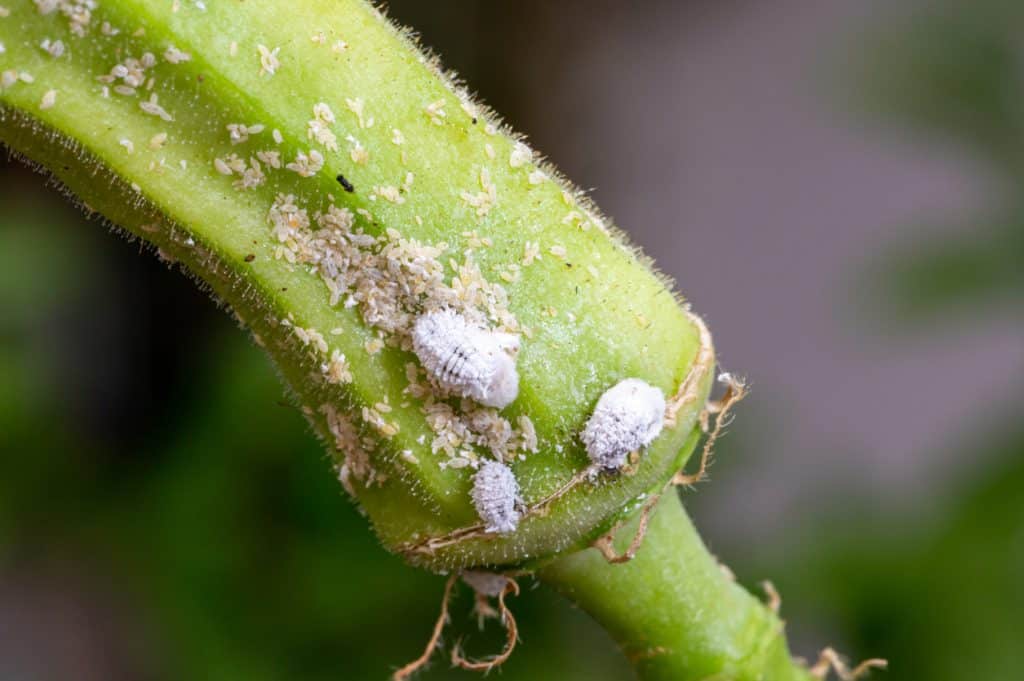
If you just look at them quickly, they almost look like a piece of walking mildew. If you have an infestation, you’ll notice that the nymphs hatch out of large cottony masses of orange or yellow eggs, with the females usually feeding in large colonies. If you have one of these, you likely have many. Just like most of the other insects on our list, these pests are also very hungry and will eat your plants.
If you just have a few of them, using some rubbing alcohol to dab the mealy bugs directly will kill them on contact. However, this is not really a solution for larger infestations, because you don’t really want to spray your cannabis plants with large quantities of rubbing alcohol. If this is the case, the only real solution is an insecticidal soap or an organic pesticide.
13. Russet Mites
Russet mites are so small that it is difficult to see them by the naked eye, with most people requiring some kind of magnification glass to see them. However, they are conical in shape with a pink, tan, or yellowish color, and they appear like other mites.
If your cannabis plants have a russet mite infestation, you’ll usually see damage starting at the bottom of the plant, with the lower leaves starting to curl and turn yellow. You’ll also see new leaves falling off of plants, and often you’ll see brown discoloration.
A variety of sulfur sprays, oil-based sprays, and various organic insecticides should do the trick. Funny enough, these are most commonly introduced through low quality potting soil. Therefore, one of the best ways to prevent a russet mite infestation is by ensuring that you buy high quality potting soil from a reputable brand.
14. Slugs and Snails
Slugs and snails also pose certain threats to your cannabis plants, because these are actually some of the hungriest garden pests around. Slugs and snails can quickly devour plant matter, and if you have a severe infestation, they’ll destroy your plants. Slugs can be easily identified by their large, brown, and squishy bodies, combined with those creepy looking eyes.
Snails can be identified by their shells. The main cause of slugs in a cannabis crop is quite simply that there is something green for these animals to eat. They like food, and your plant is just that. If you are growing cannabis outdoors, there is no real cause of a slug infestation other than they are a natural animal present outdoors.
Slugs and snails are soft, and they hate prickly barriers, such as pine needles, thorny cuttings, and crushed egg shells. This is the best way to prevent them from getting onto your plants in the first place. A good way to get rid of slugs is to allow natural predators to eat them, to catch them by hand, or to use beer traps to lure them in and kill them. Alternatively, using an insecticide is also an option.
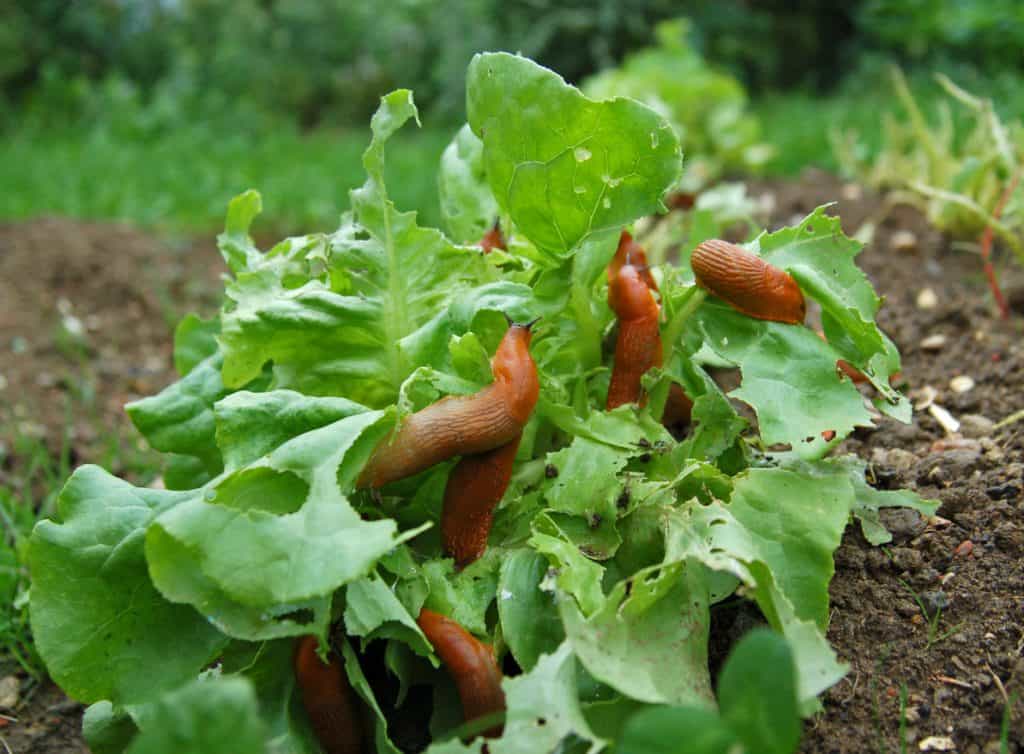
15. Spider Mites
The easiest way to identify if you have a spider mite infestation is by looking for very small moving black dots. They look like little black specks that slowly move around, and if you actually want to see them, you need to use a microscope. However, one of the telltale signs that you have a spider mites is a white web or film that they leave on infested leaves.
Spider mites reproduce very quickly, their films and secretions can suffocate leaves, and they end up eating a lot of plant matter. Interestingly enough, if your plants are too dry, it can attract them.
One of the easiest ways to kill spider mites is to spray 70% isopropyl alcohol all over your plants, making sure to cover the spider mites. That said, only do this sparingly, as large quantities of isopropyl alcohol may damage your plants. The other solution here is to use either a homemade spider mites insecticidal soap or a purchased one.
16. Stink Bugs
If you see an insect that looks like a small shield on your cannabis plant, either triangular or rounded, is between 1/3 and 3/4 of an inch long, have a pair of segmented antenna, two pairs of overlapping wings, and three pairs of legs, then you have a stink bug infestation, one of the worst insect pests around.
Stink bugs are barely hungry little plant eaters, and will quickly devour a cannabis crop if there is an infestation. They particularly like feeding on plant juices, and often cause cannabis plants to become very dried out and brittle.
A great way to prevent stink bugs from occurring in the first place is to use companion plants such as garlic. You may also use a stink bug vinegar trap, and a variety of commercial bug killers work as well. Pest prevention is very important with these guys!
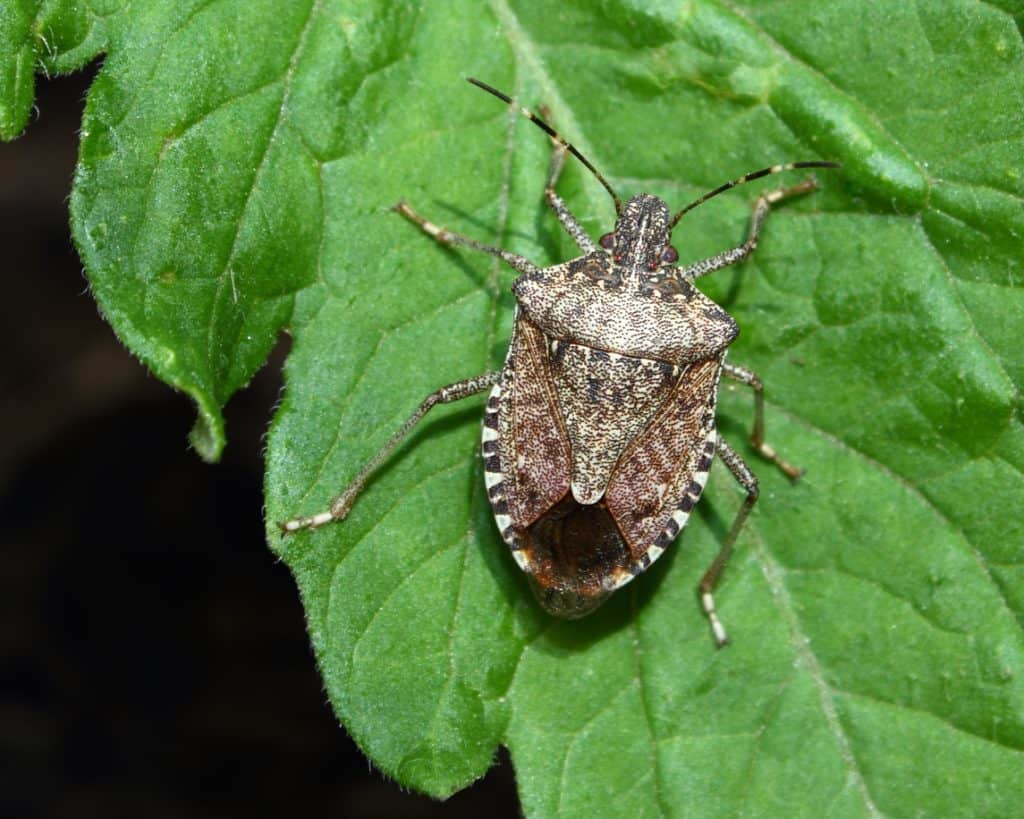
17. Thrips
Thrips are very small insects that look like very slender flies. They’re very short, and only about as thick as a sewing needle, and feature a brown, tan, or yellowish appearance. To the naked eye, they look like very small dark specks of rice.
These animals feed on a wide variety of plants and will suck the juices out of them, while also eating some plant matter. An infestation of these insects can do massive amounts of damage to your cannabis crop. Thrips are often present on other plants, fruits, and vegetables, so checking any new additions to your garden is essential.
One of the best ways to control a thrip infestation is to use simple sticky traps. However, sticky traps won’t be enough to remove all thrips if you already have an infestation, in which case an insecticide is really your only choice.
18. Whiteflies
Although they are called whiteflies, they’re not actually flies, but rather more closely related to both mealy bugs and aphids. These are very small insects that have yellowish bodies along with white wings, four of them. They also have long and slender white legs.
They’re usually only about 1/10 of an inch long, and they look like extremely small white moths. Just like many of the other pests on our list today, white flies also feed on plant sap, therefore causing a lot of damage to the leaves and many other problems as well.
One of the main causes of a whitefly infestation is the over fertilization of nitrogen in the soil, so avoiding over fertilization is a great way to prevent these flies from taking hold. One of the best ways to get rid of them is by spraying your plants with a soapy water spray or an insecticidal soap.
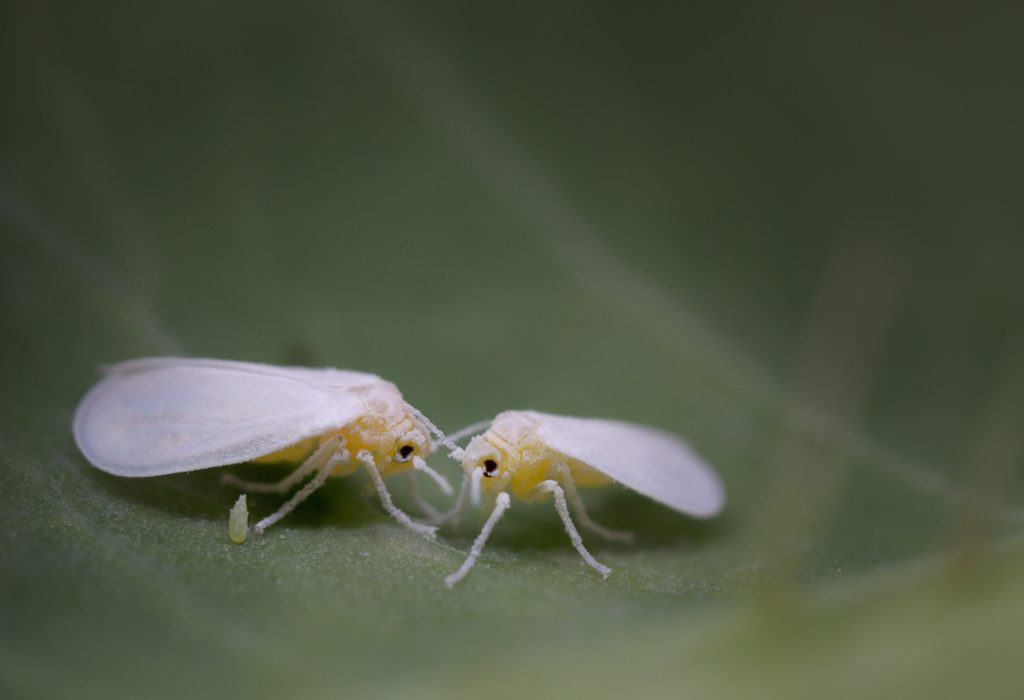
Conclusion – Pests and Cannabis Plants
Now that you have all the information you need about the pests that may infest your cannabis crop, you can quickly identify them as soon as they appear and take the appropriate steps to get rid of them. Furthermore, now that you have all of the relevant information, you can also take the appropriate steps to prevent these pests from infesting your cannabis plants in the first place.

